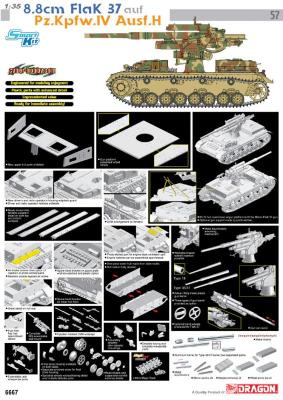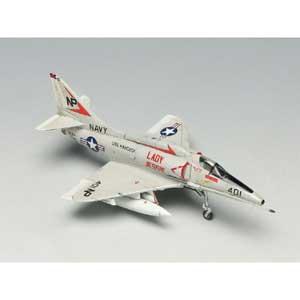Mark A. Dice
Reviews By Author

|
HMS Montrose Type 23 FrigatePublished:
BackgroundThe British Royal Navy has a long and proud tradition of Frigates in its history, dating back to the 1740’s. Smaller than a ship of the line, they were the workhorse of the British Royal Navy during the age of sail, combining a long range and the ability to operate independently, and performing a wide variety of missions more economically than the larger ships of the line. In the modern British Royal Navy, the Frigate performs many of the same missions. Primarily designed as an anti-submarine warfare ship, they also perform convoy escort and independent patrols, hunting pirates and protecting sea lanes for merchantmen. The first Frigate of the Type 23 class was commissioned in 1989, with 16 ships having been built and 13 still remaining in service.… more |

|
Soviet T-64 Mod 1972Published:
BackgroundDesigned in the 1950/60’s with production beginning in 1967, the T-64 was more expensive and technically complex than the T-72 which entered production shortly after. It had a crew of three and featured an electro-hydraulic autoloader for the main gun that initially was 115 mm but later upgraded to 125 mm smoothbore to maintain fire superiority over the NATO tanks then being produced. The smaller crew allowed the tank to be designed with a lower profile and drop in overall weight by 6 tons, but increased the workload for the crew in everyday tank maintenance. The T-64 was constantly updated throughout its production run of 13,000 that ended in 1985. It was a basis and test bed for development of the T-80 tank. The T-64 would only be used by the Soviet army and… more |

|
Ju-87B/R Stuka Decals Part IIPublished:
Eagle Editions has followed their earlier release of Ju-87B/R markings with a very nice set that gives you the option of three German or one Italian aircraft. All four aircraft are from the 1941 period and finished in RLM 65 under surfaces with the RLM 70/71 upper surface splinter scheme.
|

|
Ju-87B-2 StukaPublished:
The Junkers Ju-87 Sturzkampfflugzeug, or Stuka, was a two-seat dive bomber designed for the German Luftwaffe. Its first flight was in 1935 and it made its combat debut in 1936. Sturdily built with many innovations, it was highly accurate and very effective, and it became the symbol of German airpower during the Blitzkrieg victories at the beginning of WWII. Its lack of speed, maneuverability, and defensive firepower showed themselves against more modern fighter aircraft during the Battle for Britain. The Stuka continued to operate with success, but only in theaters where the Germans held air superiority. Once that was lost, they once again became an easy target for Allied fighters. The Ju-87B was the first mass-produced variant, with a total of 697 aircraft produced from 1937-… more |

|
Waffentrager 88mm PAK-43Published:
During the last desperate days of the Third Reich, the Germans had many armor projects under development and design. Some were prototype test vehicles and some just concepts on the drawing board. These have shown up recently as a spate of new kit releases for armor modelers, very similar to the Luft ’46 kits that have been coming out for years for airplane builders. This kit from Trumpeter was a design by Krupp/Ardelt, mounting the powerful PAK-43 anti-tank gun on the Hetzer chassis, combining a hard hitting gun and a highly mobile, lightly armored vehicle with limited crew protection. Trumpeter’s kit has over 1000 parts of plastic, two metal gun barrel parts, and two small photo etch frets. The vehicle and gun parts are molded in a tan plastic. The individual track links are… more |

|
Battlestar Galactica Colonial Viper Mk VIIPublished:
BackgroundThe Colonies’ current frontline version of the Viper design, the Mk VII retains the Mk II’s general layout with the addition of fully integrated avionics that provide the pilot with superior battle management and flight information, three forward firing cannons, wing mounted missiles, and the ability of atmospheric flight. Sadly, most were wiped out in the Cylon’s renewed attacks against the Colonies when their more modern computer systems were infected and shut down by a Cylon computer virus. Most were easily wiped out by Cylon raiders, with only a few models that were in need of upgrade escaping the virus and living to fight another day. KitThe kit parts are cleanly molded in a light gray color, flash free, and have recessed panel lines that… more |

|
Stug. III Ausf. F/8 Late production with WinterkettenPublished:
BackgroundThe Sturmgeschutz III (Stug III) assault gun was the most produced armored vehicle by Germany in WWII. It was built on the Panzer III chassis, initially to provide infantry support but continually modified and improved growing into a very effective tank destroyer. The Stug III F/8 was produced Sept. - Dec. 1942 with 250 being built. It introduced an improved hull similar to the Panzer III Ausf. J/L with additional armor of 30mm thickness bolted on to speed up production. It mounted the 7.5cm Stuk 40 L/48 gun that would become the standard gun carried throughout the G series. KitThis is one of Dragon’s “Smart Kits”. It contains over 800 light grey parts, photo etch, metal wire, and the Magic Track type individual track links. Many of the… more |

|
8.8 cm Flak 37 auf Pz.Kpfw IV Ausf. HPublished:
BackgroundThe 8.8 cm Flak gun proved to be a very versatile and potent weapon for the Germans in WWII. The Germans explored many different vehicle-weapon combinations and the subject of this kit is one of them. There were only 3 prototypes of this variant of the Pz.Kpfw IV produced by 1942. While they performed very well in field trials, no more were manufactured because tank production took priority. It was heavy for a self-propelled gun and its size would have made moving it by rail problematic. The project was cancelled by Albert Speer in January 1945. KitThis is a limited edition kit from Cyber-hobby and it is loaded with goodies. The large box contains almost 1000 pieces of light gray plastic, 4 small photoetch frets, aluminum barrels, metal chain and… more |

|
A-4F Skyhawk "Lady Jessie"Published:
The A-4 Skyhawk is one of the longest serving ground attack aircraft ever designed with its first flight in June of 1954 and many are still in service with several countries today. Designed as a carrier capable ground attack aircraft for the US Navy and US Marine Corps it has served in wars and conflicts for several countries. Over 3000 of these planes were built. The “Lady Jessie” aircraft are aircraft named in honor of Jessie Beck, a woman who was a close acquaintance of one of VA-164s pilots killed in action in Vietnam; who continued to send care packages to the squadron long after his death. The first plane to display her name was Lt Cdr Dick Perry’s (the pilot killed in action) but later, the CO’s aircraft would bear the honor until the squadron’s disestablishment in 1975… more |
